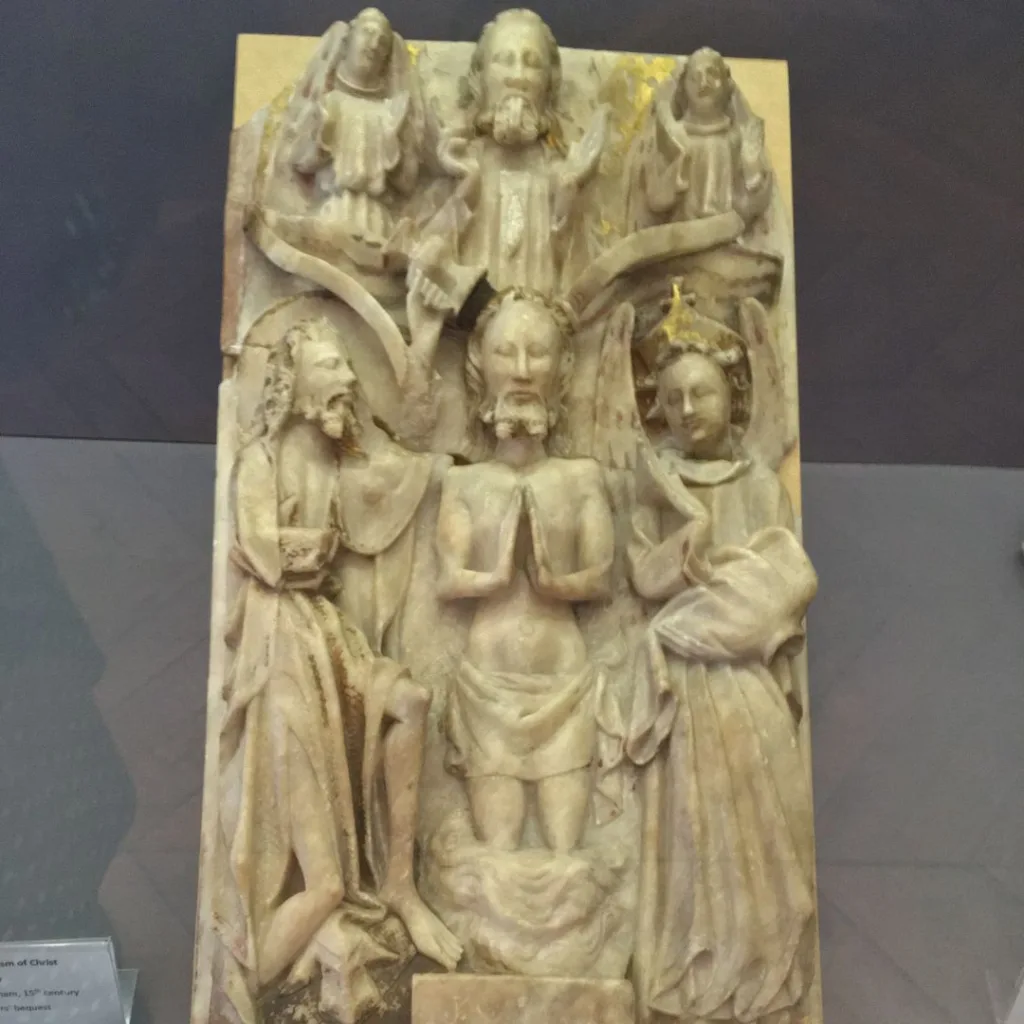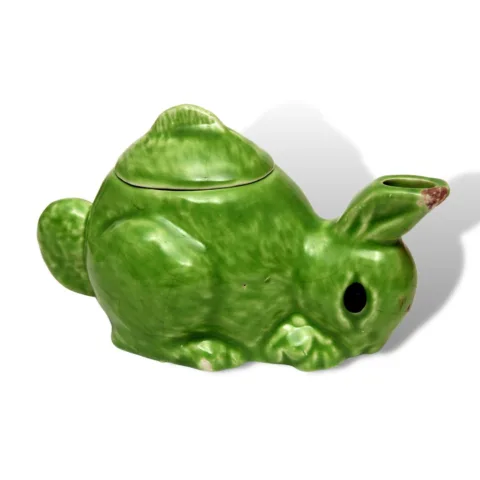The Bowes Museum Blog

Nottingham Alabaster

Nottingham Alabaster is the name given to English medieval carvings which are small and of a religious theme. The Bowes Museum has three examples from the 15th century which were bought by John and Joséphine Bowes and which are on display in Room 13.

Carved panels like these were made in huge quantities in Nottingham where the soft gypsum mineral was extensively quarried. They were usually brightly painted in whole or part and assembled into sets of devotional images or altarpieces. The religious stories they depicted were used to help people who couldn’t read or understand the Bible.
The three panels in The Bowes founders’ collection are: The Baptism of Christ (S.122), the Betrayal of Christ (S.123) and the Execution of St John the Baptist (S.121). Despite having the appearance of stone, these objects are very fragile (long ago, one was broken right through) yet you can still see vestiges of the medieval pigment.

In the Baptism scene, Christ stands in the River Jordan with his hands together in prayer while John the Baptist pours water over his head. An angel (possibly the Archangel Gabriel) wearing a head-dress surmounted by a cross, carries his garments. In the top third of the relief, God, hands upraised in blessing, is flanked by two angels.
In the Betrayal scene, Judas identifies Christ to the Roman troops with a kiss, while on his right Peter is about to draw his sword to cut off the ear of one of the followers. In the right foreground kneels a devil dressed in medieval costume.

John’s head on a dish can be seen in the third panel. The bearded executioner stands flanked by possibly Herod with his hands folded on a staff (or sword scabbard) and by Salome who holds the grisly trophy.
In the museum’s archives, there are tantalising glimpses of how John and Joséphine Bowes acquired their objects, but in this case, there is insufficient detail to be sure precisely when and how much they paid for these panels, though it is probably safe to assume they bought them in France.
The alabaster industry flourished from the 14th to the early 16th century, with carvers at work close to mines in London, York and Burton-on-Trent, as well as Nottingham. The mineral is softer and easier to work with than marble and a good for mass production. Sets for altarpieces up to 50cm high could be easily moved and fitted into stone or wooden surrounds. This made them very desirable to churches and the nobility to include within their private chapels.

The export market for Nottingham Alabaster was vast and among the biggest customers was France where, even today, some churches still have in place their English alabaster altarpieces, unlike England where surviving examples are very rare because so much was destroyed during the Reformation.
The Bowes Museum’s Nottingham Alabaster’s are due to feature in a BBC 4 programme called Handmade in Bolton, where an ex-forger is set a challenge of making an alabaster carving. The half-hour programme is due to be aired on October 9 at 7.30pm.







